After having taken our children to the Music and Science museums, we wanted to take them someplace that will give them an opportunity to slow down, breathe deep and reconnect with themselves. Praani -the rescue animal sanctuary became an easy choice.
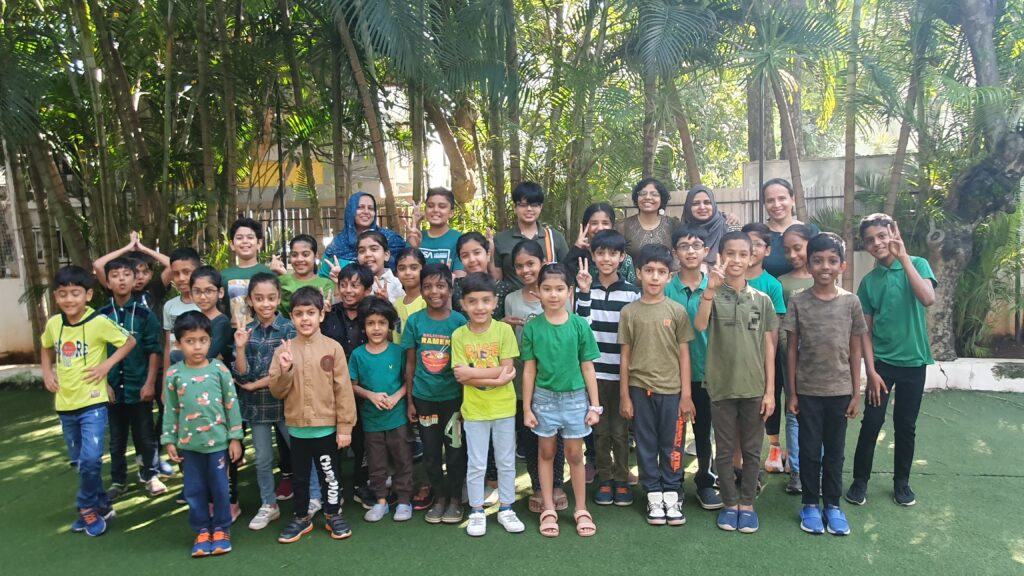
Praani is located outside of Bangalore, nestled in the middle of farms, off Kanakapura Road. Its serene environs coax you into slowing down. The sanctuary not only houses rescue animals, but also actively engages in educating and sensitizing the younger generation about the importance of these animals.
The first order of business was to develop a code for “silence”, as animals do not want to compete with our little humans about who can bring the ceiling down first!
Our tour guide introduced the children to what the Praani staff does, how these animals came to be here and then, he helped them connect with Mother Earth by actually sitting on the ground. For many children, this was practically the first time they sat down on open soil. The staff then talked to them about how various animals are crucial to the food chain and how humans, through their recklessness, are upending this delicate balance. They requested our kids to observe, love and learn from the animals they were going to pet today! And learn –the kids did!
The first ones were rabbits, and who can resist a fluffy bunny coming their way? The children were taught exactly how to touch animals, what not to do and why the animals don’t appreciate certain things like loud noises and being cruelly handled. The two rabbits enjoyed all the undivided attention and basked in the glory of the heaps of unconditional love coming their way. The little ones were a bit ferrety in the beginning, but upon reassurances from the handlers, they soon got comfortable and kept coming back for seconds!
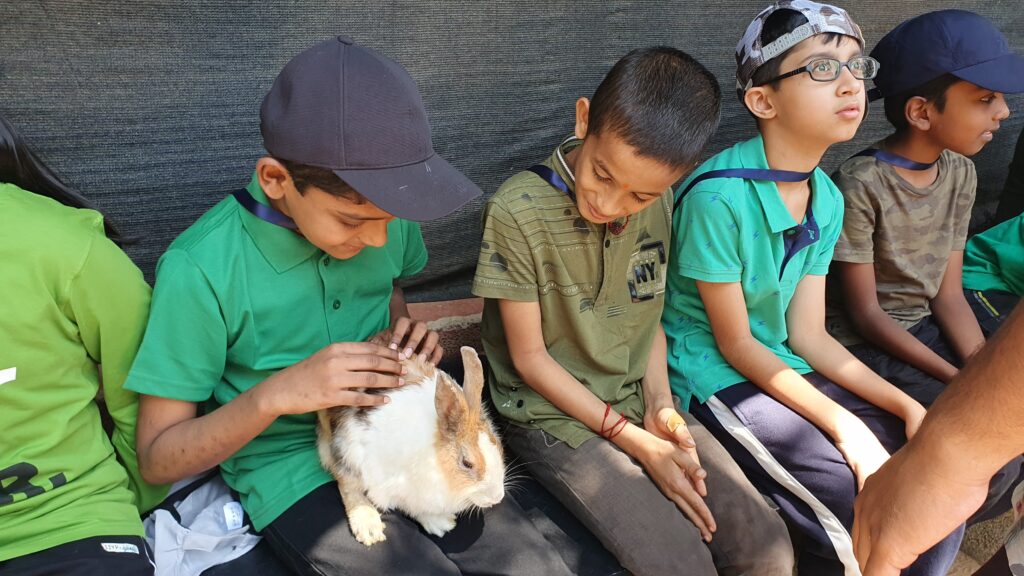
The next in line was an out-of-the-world demonstration of hunting by the archer fishes. These marvels of nature put human capability and skill to shame! Having never gone to an archery school for a day of their lives, it’s miraculous how accurate these fishes are, without a bow or arrow in sight. As the handler put a worm on the branch, a bunch of archers shot perfectly-trained water jets onto the bait and before we could bat an eyelid, the worm plopped into the water and was gone! Nature works in mysterious ways and the children tried to understand and soak all this wonder. It was a fun discussion, we’re sure, for the handlers too, to see the tiny tots wonder out loud how the archer fishes must’ve learnt the skill of archery!
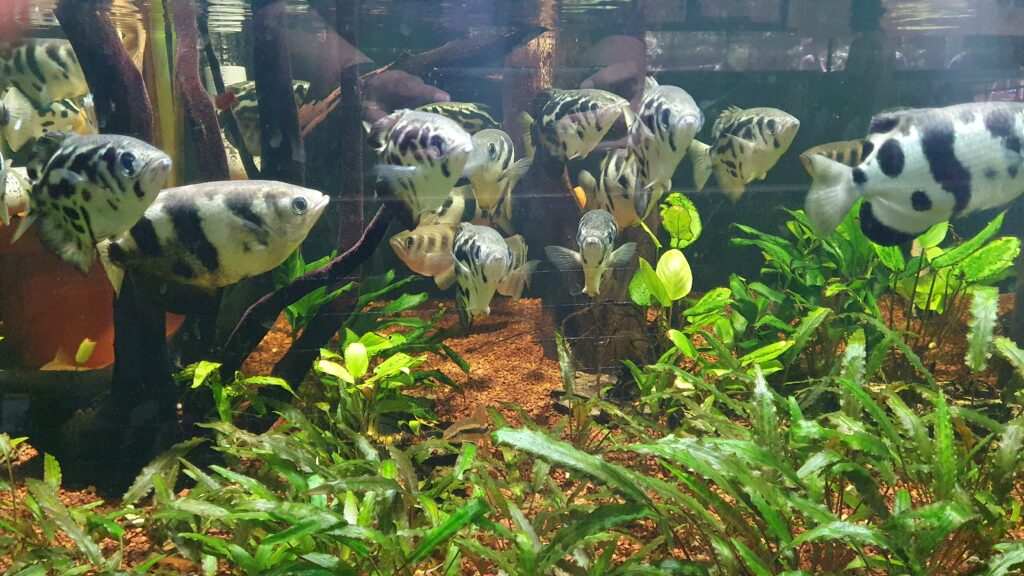
Once the children had seen the demonstration enough times (read: The handlers insisted we move, lest we may miss out on seeing many more “cool” things), we were introduced to the reptiles that are nothing short of the magnum opus of evolution – Snakes! An African ball python was brought in and lovingly handled by all the children. Among the most vilified creatures on the planet, snakes often find themselves at the wrong end of the stick, quite literally. But once you’ve seen someone up close, it is hard to hate it. Our children loved the experience but some were still, and understandably so, terrified and refused to come close. The handlers never forced a single child, but never failed to educate the children either. Once the adrenaline rush had abated a bit, the children were shown the turtles (along with a detailed introduction to their characteristics and habitat), emus (that the children were allowed to touch), geese, red eared sliders, ducks, and a host of large lizards.
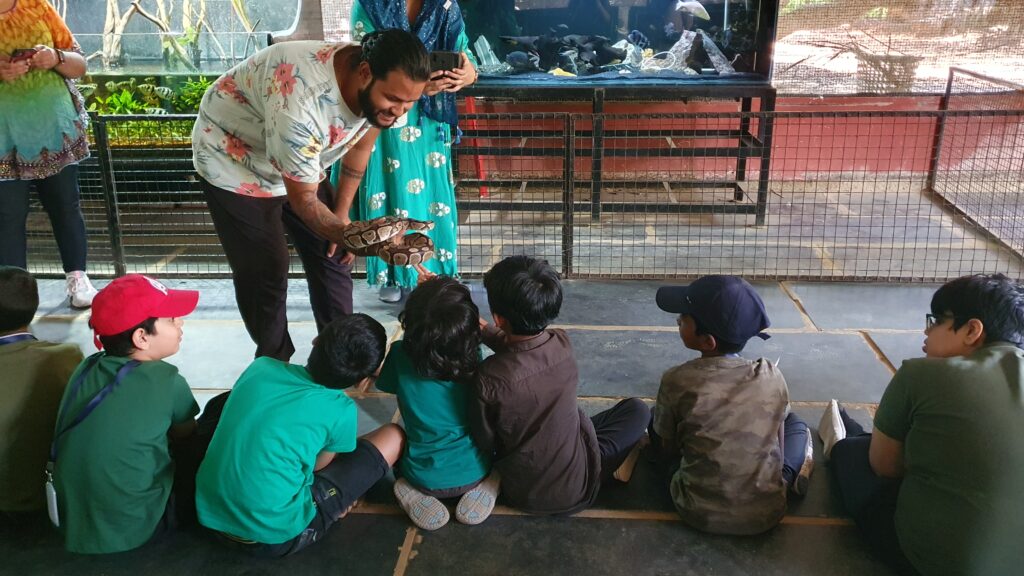
The star attraction of Praani was the bird enclosure, because the children were carrying the favorites of the birds –bird seeds! The children stood in a queue and held out sunflower seeds for the birds to eat.
At one point, the happy shrieks of the children began to drown the noisy birds! Some children enjoyed the experience so much that they refused to leave the cage at all! This was the case with some of the teachers too though.
The birds ranged from the brightest blues of love-birds to the electric green of the parakeets to the darker tones of the cockatoos. They hopped from hand to hand and soon decided upon some favorite perches. Every shiny thing in sight was pecked at, sending the children into giggling fits as their watches, earrings and bangles became targets of the lame avian attempts at robbery!
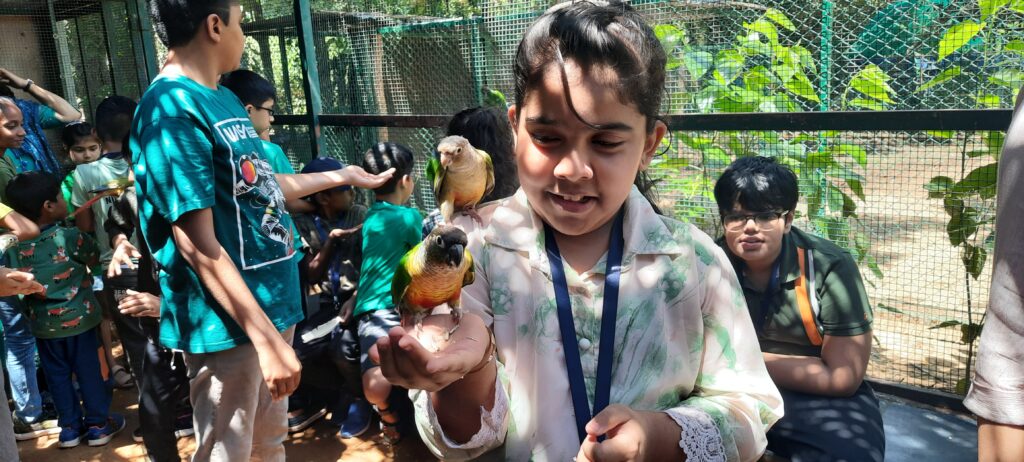
This entire fun-laden experience brought us nearly to lunch time and the kids enjoyed their home-brought lunches with hens pecking around their feet. As sandwiches, noodles, parathas and toasts were passed around, children enthusiastically compared notes on who liked what the best. There was a passionate argument or two about whose favorite was better, typical child-speak when children are excited!
Post-lunch promised to be even more fun, because the first thing on the agenda was rodents.
These sneaky little nocturnal critters are so rare in the cities that the children could barely tell one creature from another. The caretakers explained in detail how these less-than-desired creatures in an urban setting are a crucial part of the ecosystem. A thorough initiation later, the staff passed two gerbils around for children to pet. These glossy creatures are fidgety and lightning fast. They caused a fright or two around by crawling up the children’s hands and heads.
The general air of excitement reached its crescendo when the staff announced that an iguana, basking in the sun on a log just outside of the rodent enclosure, was the next thing the kids could pet. The iguana is a majestic creature, with a texture, almost leathery dry skin, yellow dragon-like eyes and sharp as a knife talons. This particular iguana, however, just lazed and enjoyed being petted on its side by doting children. Many oohs and aahs later, it was time to move on to something larger and farther away from the ground.
The staff steered our group towards the equine and bovine enclosures – The mare named Maya, a couple of super-smart donkeys and an entire herd of goats. Our first stop here was the mare, who was happily chomping on the blades of her favorite grass being handed to her by our kids. The caretakers were careful to tell the children about the dos and don’ts and this made the entire experience not only fun, but also extremely safe.
Most children were smitten by the donkeys though, because in common parlance, it’s taken to be a stupid animal that knows nothing more than carrying loads around brainlessly. The staff enlightened us about how donkeys work cooperatively and smoothly in keeping their surroundings spick and span. They are extremely particular about where they eat, where they defecate and even take care of cleaning up after themselves. They are also known to have very good memories, to the extent that they remember their ‘space’ years after having left from there. The children came away with a newfound appreciation for these lesser-loved equine cousins of Maya. The fact that these donkeys looked extremely cute was just an added bonus!
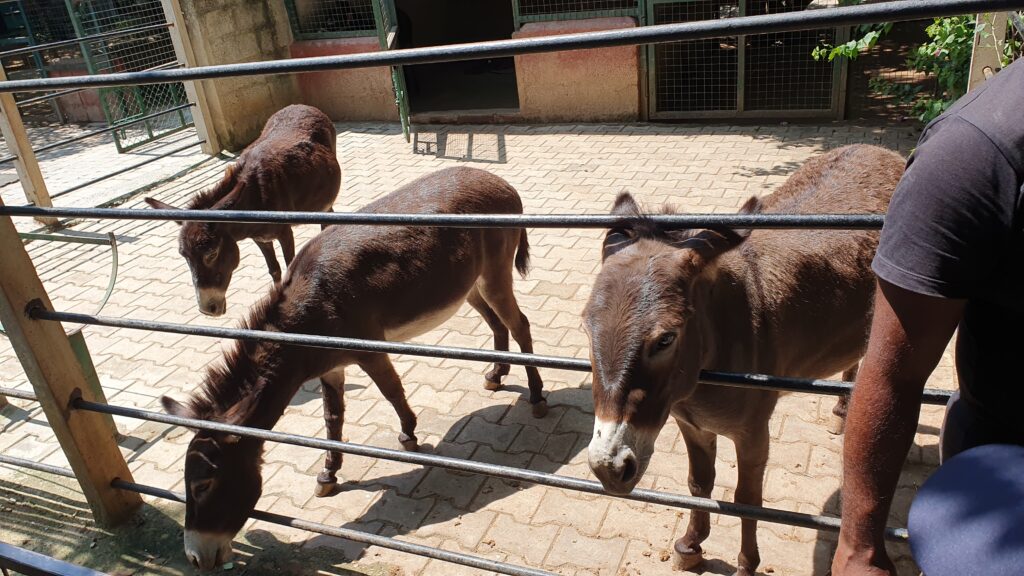
After nearly dragging the children off from the donkeys’ enclosure, we entered the one where we could walk among goats. The goats loved the attention showered on them by the humans and roamed freely, demanding a thorough scratching from whoever they took fancy to. The older kids had a spirited discussion about who could be the ‘alpha’ of the group and turns out, the alpha didn’t want much of their attention. The (human) kids with the (bovine) kids enjoying each other’s company was quite a sight to behold! The younger bovine kids even headbutted a few human kids for garnering their attention, leading to more than a few laughs!
At the end, the children glowed both with perspiration and satisfaction as they walked towards the bus, exchanging notes on their experiences. The exhaustion was written large on their faces as the journey back was a lot quieter. We bade goodbye to the animals, and relived memories we gathered at the sanctuary.
From richly coloured iguanas to the pecking birds, slithering snakes and plushy rabbits –these tender interactions helped us all pause and look beyond the sameness of our human world, and connect with all that we so often forget to observe and cherish.
